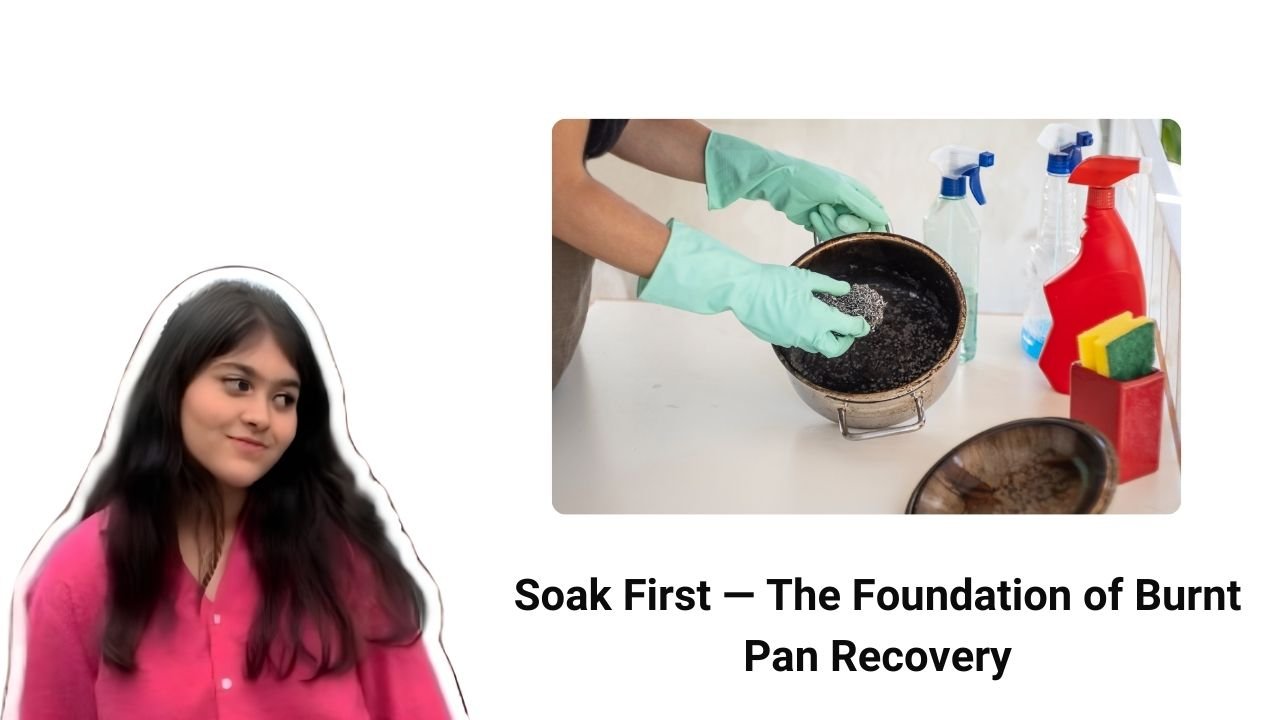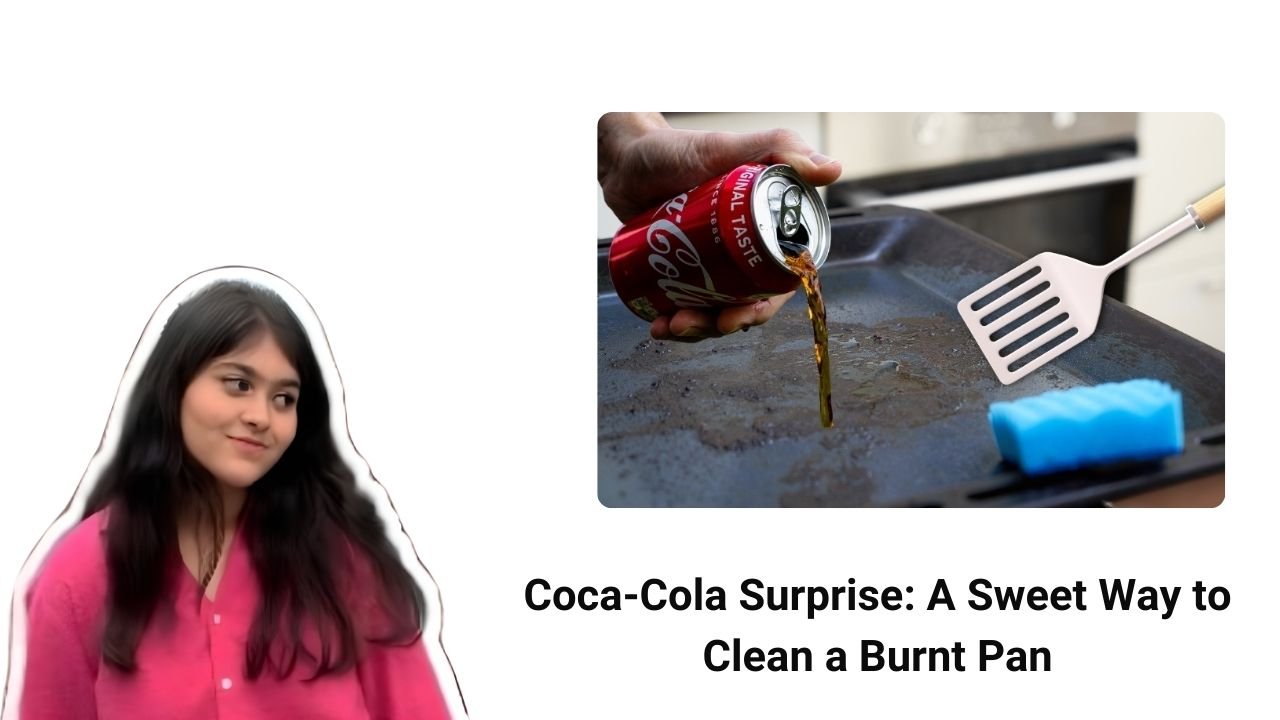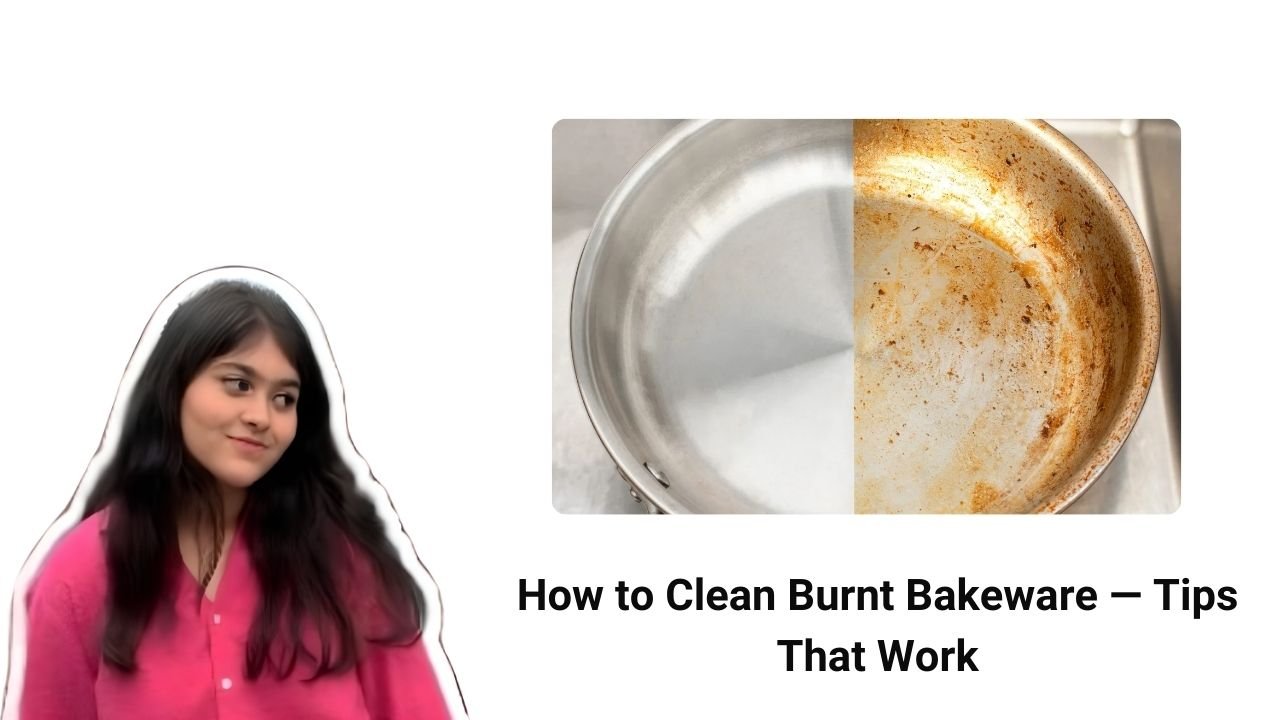We’ve all been there. You pull your favorite baking dish from the oven, expecting golden perfection, and instead you’re greeted by a layer of stubborn, blackened crust glued to the bottom. It’s not just frustrating—it can feel a bit defeating. But don’t toss that pan in the trash just yet. With the right methods, you can make even the most scorched pans sparkle again. This guide on how to clean burnt bakeware — tips that work will walk you through real solutions that actually deliver.
Whether it’s a beloved cookie sheet or a pricey stainless steel roasting pan, every piece of bakeware deserves a second chance. Let’s get into the foolproof tricks, from old-school vinegar soaks to surprising ingredients like cola and hydrogen peroxide, that can transform your burnt disasters back into kitchen heroes.
Why Bakeware Burns in the First Place
Burnt bakeware happens to the best of us. Sometimes it’s a recipe that ran too long, other times it’s sugar that bubbled over or a sauce that decided to rebel. But the real culprits are often more basic: heat and neglect. When food sticks and gets exposed to direct heat for too long, it carbonizes, forming a stubborn burnt layer that clings like a bad habit.
Certain types of pans—especially metal and glass—are more prone to burning because they hold and transfer heat differently. Non-stick coatings help, but they can still fail if overheated or scratched. Add in a dash of forgetfulness (like skipping the parchment paper), and you’ve got a recipe for sticky, burnt trouble.
Knowing how these stains form makes cleaning them easier. You’re not just scrubbing randomly—you’re breaking down carbonized food particles with chemistry and technique. That’s where the next section comes in.
Soak First — The Foundation of Burnt Pan Recovery

Before grabbing the scouring pad, give your pan a fighting chance with a proper soak. A simple water and vinegar mixture is your first line of defense. Think of it like prepping the battlefield—loosening burnt bits so they surrender easily later.
Here’s what to do:
- Fill your burnt bakeware with equal parts hot water and white vinegar.
- If it’s safe, bring it to a light boil on the stove. If not, let the mixture sit hot for 20-30 minutes.
- Once cooled slightly, discard the liquid.
This trick works especially well for how to clean burnt pan bottoms. The heat plus vinegar starts to dissolve stuck-on grime. It’s especially effective on glass and ceramic, where crusty sauces and syrups like to bake into invisible layers.
Tip: Use a wooden spoon to gently scrape the loosened bits while the pan is still soaking. It’s oddly satisfying—and effective.
Baking Soda Bomb: Your Secret Weapon
Once you’ve soaked your bakeware, it’s time to bring out the baking soda. This gentle abrasive is like a scrub fairy for your cookware. It doesn’t just clean—it neutralizes odors and works as a mild alkali to break down grease and burnt sugars.
For this step:
- Sprinkle a generous layer of baking soda over the burned surface.
- Add a few tablespoons of warm water to create a paste.
- Let it sit for at least 4–6 hours, or overnight for tough spots.
- Scrub with a non-scratch scouring pad or sponge.
This is a favorite method on forums like “How to clean burnt bakeware tips that work with baking soda” because it’s low-cost, non-toxic, and actually works. The key is patience—give it time to do the heavy lifting. Once it’s ready, you’ll notice the grime lifting almost effortlessly.
Bonus tip: Add a few drops of lemon juice or essential oil to the mix for a fresher scent and a bit more cutting power.
When It’s Really Bad: The Hydrogen Peroxide Trick

For the “I’ve-tried-everything” level of burnt pans, hydrogen peroxide can be a game-changer. It sounds intense, but this method is safe when used carefully—and powerful against deep-seated stains.
Here’s how to use it:
- Cover the burnt area with a layer of baking soda.
- Drizzle hydrogen peroxide (3%) over the soda until it forms a thick, wet paste.
- Let it sit for a few hours or overnight.
- Gently scrub using a sponge or steel wool (depending on the pan type).
This combo breaks down protein and sugar-based burns, which are the toughest to lift. It’s especially great for how to remove burnt stains from stainless steel, where regular scrubbing fails.
Be cautious: don’t use hydrogen peroxide on aluminum or non-stick surfaces, as it may damage the finish. Stick to stainless steel, enamel, or glass when trying this method.
Quick Fix: Cleaning in 5 Minutes (When You’re in a Rush)
Sometimes, you need results fast. Maybe guests are on the way, or you just can’t stand the sight of that blackened tray any longer. For a speed clean, try this hack.
- Sprinkle a thick layer of coarse salt or baking soda onto the stain.
- Add just enough hot water to cover the base.
- Use a cut lemon half as your scrubber—juicy side down.
- Scrub in circles for a couple minutes.
- Rinse and wipe dry.
This quick-fix solution works well for recent burns or lightly scorched areas. It’s also a natural, safe method, ideal for those wondering how to clean baking pans in 5 minutes without chemicals.
Just don’t expect miracles on long-term buildup—but it’s a great emergency tactic.
Comparison Table: What Works Best for Burnt Bakeware?
Here’s a quick reference to help you pick the right method based on your pan type and burn severity:
| Cleaning Method | Best For | Avoid On | Time Required |
| Vinegar + Water Soak | Light to medium burns, metal/glass | Non-stick if boiling | 30–60 minutes |
| Baking Soda Paste | Sticky residues, sugar-based burns | Works on most surfaces | 4+ hours |
| Hydrogen Peroxide Mix | Deep-set stains on stainless steel | Aluminum, non-stick pans | Overnight |
| Salt + Lemon Scrub | Fresh burns, light stains | Delicate surfaces | 5–10 minutes |
| Boiling Vinegar + Soda | Burnt-on bottoms, thick crusty stains | Non-stick, plastic handles | 45 mins – 2 hours |
With this cheat sheet, you’ll never wonder again how to tackle even the most stubborn burnt mess.
Coca-Cola Surprise: A Sweet Way to Clean a Burnt Pan

You might love it chilled over ice, but did you know Coke can rescue your worst kitchen disasters? Yep—one of the more surprising tips on how to clean a burnt pan with Coke involves using this fizzy drink as a cleaner. Thanks to the phosphoric acid in Coca-Cola, it can break down burnt gunk, especially sugar-based messes from sauces and glazes.
Here’s how to try it:
- Pour a can of Coca-Cola into your burnt pan.
- Simmer it on low heat for 10–15 minutes (if stovetop-safe).
- Let it cool completely.
- Use a soft sponge to scrub off loosened bits.
The sugar and acid combo does wonders. It’s especially helpful for baking pans where marshmallows, caramel, or chocolate went rogue and hardened like cement. Just be sure to rinse thoroughly afterward—unless you want your cookies tasting like cola.
Using Salt: An Old-School Cleaning Hero
If you’re wondering how to clean a burnt pan with salt, you’re not alone. Salt is one of those humble kitchen heroes we often overlook. It’s gritty, natural, and safe for nearly all surfaces. Plus, it won’t scratch non-stick finishes when used gently.
Try this method:
- Cover the burnt area with coarse kosher or sea salt.
- Add a bit of warm water to create a thick paste.
- Let it sit for 10–15 minutes.
- Use a sponge or cloth to scrub gently in circles.
This trick is great for cast iron, ceramic, or glass pans that need a deep but safe scrub. It’s also ideal when you’re avoiding chemicals or just want to keep things eco-friendly.
Preventing Burnt Bakeware in the First Place
Okay, so you’ve conquered the clean-up. But what about prevention? You don’t want to keep doing this after every bake, right? Learning how to clean burnt bakeware — tips that work also means avoiding burns before they start.
Here’s what helps:
- Grease your pans properly: Even non-stick pans benefit from a light oiling.
- Use parchment paper: It adds a barrier between your food and the surface.
- Don’t overbake: Keep an eye on the oven; a few extra minutes can mean disaster.
- Choose the right bakeware: Some materials burn more easily than others.
Bakeware to Avoid for Sticky Messes:
- Cheap, thin aluminum pans
- Scratched non-stick surfaces
- Plastic-handled pans on stovetop burners
Stick to heavy-duty stainless steel, ceramic, or glass when possible. And always check the manufacturer’s instructions before cleaning aggressively.
When to Use Vinegar: Burnt Bottoms Need Acid Love
Some of the worst messes happen on the outside—the bottoms of your bakeware. We’re talking about that charred black crust that forms when a spill hits the oven floor and sticks to your pan from underneath.
If you’re stuck wondering how to clean burnt pan bottoms with vinegar, here’s a tip that works like a charm:
- Flip the pan upside down.
- Soak the bottom with a vinegar-soaked cloth or paper towels.
- Wrap it in foil to hold in the moisture.
- Let it sit for a few hours or overnight.
- Scrub using a sponge or steel wool, depending on the material.
The acid in vinegar dissolves carbon buildup, especially on stainless steel or enameled cookware. Pair it with a baking soda scrub afterward for an even cleaner finish.
Mistakes to Avoid When Cleaning Burnt Bakeware
Let’s be real: sometimes we make things worse trying to fix them. So here are a few things NOT to do when cleaning burnt bakeware.
Don’t use metal scrapers on non-stick pans—they’ll destroy the coating faster than you can say “brownies.”
Avoid bleach or oven cleaner unless the pan specifically says it’s okay. These harsh chemicals can damage the surface and even leave behind toxic residues.
Don’t use cold water on hot glass or ceramic pans—it can cause thermal shock and shatter them. Always let them cool before cleaning.
And finally, don’t rush it. Letting your cleaning mixtures sit is often what makes the difference between effortless scrubbing and hours of frustration.
Choosing the Right Method for the Right Pan
Different materials respond better to different cleaning techniques. Here’s a quick reference to guide you based on pan material:
| Pan Type | Best Cleaning Method | Avoid |
| Stainless Steel | Baking soda + vinegar or hydrogen peroxide | Abrasive metal scrubs |
| Non-Stick | Baking soda paste, gentle sponges | Steel wool, hydrogen peroxide |
| Glass | Vinegar soak + soda scrub | Sudden temperature changes |
| Ceramic | Salt scrub + vinegar soak | Harsh chemicals |
| Cast Iron | Salt scrub + oil reseasoning | Soaking in water overnight |
By knowing what works and what doesn’t for your bakeware, you’ll extend its life and save money in the long run.
Your Go-To Cleaning Kit: Burnt Bakeware Rescue Tools
It helps to keep a simple “cleaning toolkit” on hand for when things go wrong. Here’s what we recommend:
- Baking soda
- White vinegar
- Hydrogen peroxide (3%)
- Lemon or lemon juice
- Coarse salt
- Non-scratch sponges
- Wooden spoon
- Rubber gloves
These household staples cover just about every method in this guide. Keep them in one spot and you’ll always be ready for a burnt bakeware emergency.
Wrap-Up: You’ve Got This!
Burnt pans are annoying, but they’re not the end of the world—or your bakeware. Whether you’re rescuing grandma’s vintage roasting tray or your brand-new baking sheet, the solutions above will help you tackle the grime with confidence.
The best part? You don’t need expensive products or commercial cleaners. Just a bit of baking soda, vinegar, and patience goes a long way. You now know how to clean burnt bakeware — tips that work, and more importantly, why they work.

Hey, I’m Nandoza Ahammad, passionate food enthusiast and creator of narzcookingcave.com, shares delicious recipes and cooking tips worldwide.

